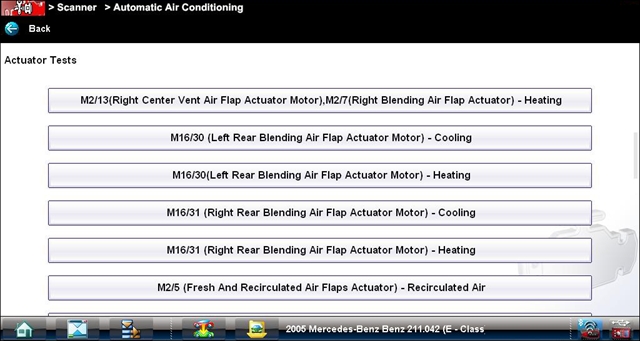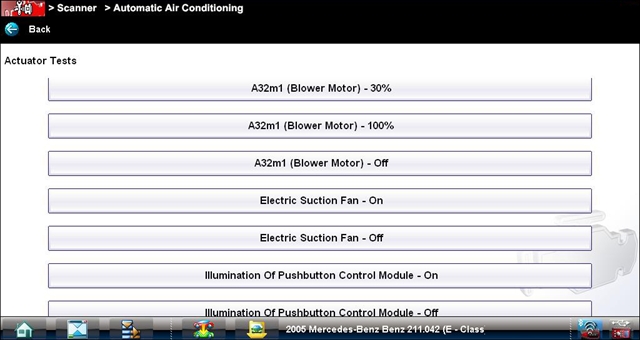Take a look at some important steps you need to know when it comes to diagnosing car air conditioning issues, with the help of a Snap-on diagnostic expert.
Over the last couple of decades, vehicle manufacturers have pushed boundaries to improve occupant safety and comfort.
They have given us many innovations to enhance our driving experience while making vehicles safer.
One tool that has evolved over many years is air conditioning, which now forms part of a vehicle’s active safety system.
Many cars now have air conditioning at the very least, or even climate control; systems that contain high- and low-pressure sides, compressors, condensers, evaporators and refrigerant, along with many more components.
Most comfort systems now have some form of diagnostic capabilities, be it codes only, codes and data, or actuators.
Focusing on automatic air conditioning from a 2005 Mercedes-Benz E-Class (W211), I selected the actuators [fig 1] so that I could find lists of them [fig 2].

[fig 1]

[fig 2]
When automatic air conditioning is working correctly, all of the components listed as actuators will be commanded by the control module to perform a given task.
However, when a system is not working as it should do, that is where diagnosing automatic air conditioning is a difficult task.
Using a diagnostic tool to actuate many of the components fitted in the system – like the blend motors, blower, hot and cold taps and other parts – is a must.
These components are usually in very hard-to-reach places at the rear of the dashboard, making access incredibly difficult.
Using the Snap-on VERUS Edge scan tool can aid you in the actuator test – you may visibly or audibly note the component moving during the given actuation period.
While running such actuators on the VERUS Edge it may not be possible to see or hear the actuation events, but one of the tool’s stand-out features is the ability to view the oscilloscope while using the scanner.
This will assist you in diagnosing the automatic air conditioning system, running the actuator and viewing the scope monitoring the signal wire to a given component.
The signal wire could be a simple PWM (pulse width modulation) or LIN (local interconnecting network).
That said, before we rush in with the diagnostic tools, it is important to make sure that the basics have been checked first – such as ensuring that the mechanical system is good, visually inspecting the system, checking the correct amount of refrigerant and PAG oil, referring to technical data and using the air conditioning service station. This can be achieved easily and safely.